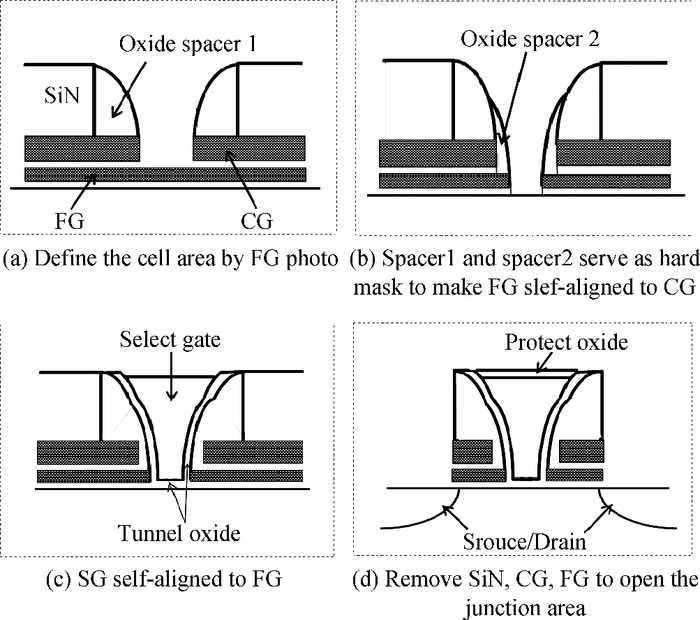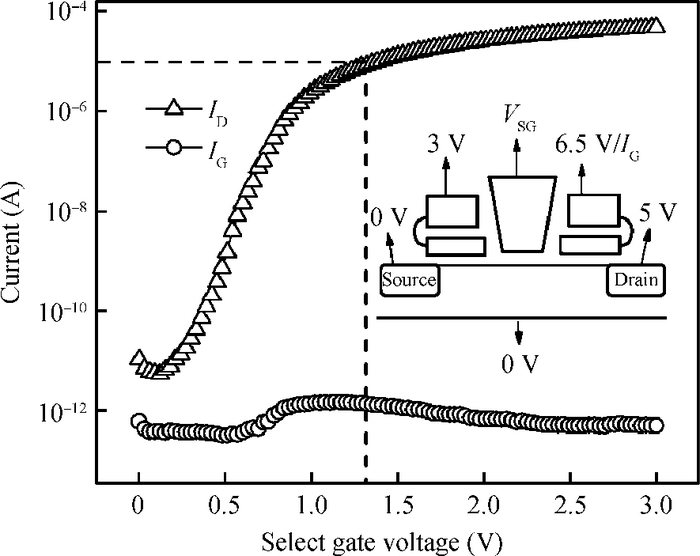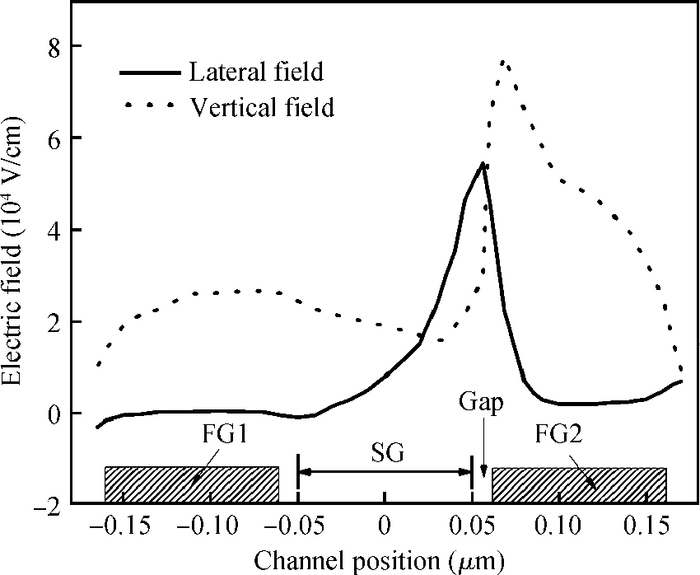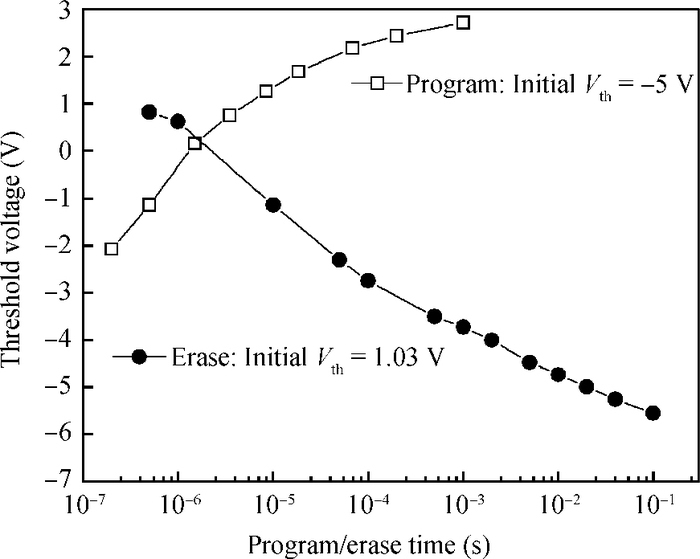| Citation: |
Liang Fang, Weiran Kong, Jing Gu, Bo Zhang, Shichang Zou. A novel symmetrical split-gate structure for 2-bit per cell flash memory[J]. Journal of Semiconductors, 2014, 35(7): 074008. doi: 10.1088/1674-4926/35/7/074008
****
L Fang, W R Kong, J Gu, B Zhang, S C Zou. A novel symmetrical split-gate structure for 2-bit per cell flash memory[J]. J. Semicond., 2014, 35(7): 074008. doi: 10.1088/1674-4926/35/7/074008.
|
A novel symmetrical split-gate structure for 2-bit per cell flash memory
DOI: 10.1088/1674-4926/35/7/074008
More Information
-
Abstract
A fully self-aligned symmetrical split-gate cell structure for 2-bit per cell flash memory with a very competitive bit size is presented. One common select gate is located between two floating gates and a pair of source/drain junctions are shared by the 2 bits. The fabrication method utilized here to create a self-aligned structure is to form a spacer against the prior layer without any additional mask. Although the cell consists of three channels in a series, the attributes from conventional split gate flash are still preserved with appropriate bias conditions. Program and erase operation is performed by using a source side injection (SSI) and a poly-to-poly tunneling mechanism respectively.-
Keywords:
- split-gate flash,
- 2-bit per cell,
- self-aligned process
-
References
[1] Houdt J V, Haspeslagh L, Wellekens D, et al. HIMOS-a high efficiency flash E2PROM cell for embedded memory applications. IEEE Trans Electron Devices, 1993, 40: 2255 doi: 10.1109/16.249473[2] Cho C Y S, Chen M J, Chen C F, et al. A novel self-aligned highly reliable sidewall split-gate flash memory. IEEE Trans Electron Devices, 2006, 53: 465 doi: 10.1109/TED.2005.863764[3] Shih H S, Fang S W, Kang A C, et al. High program efficiency of p-type floating gate in n-channel split-gate embedded flash memory. Appl Phys Lett, 2008, 93: 213503 doi: 10.1063/1.3023057[4] Chu W T, Lin H H, Hsieh C T, et al. Shrinkable triple self-aligned field-enhanced split-gate flash memory. IEEE Trans Electron Devices, 2004, 51: 1667 doi: 10.1109/TED.2004.835995[5] Wu M Y, Lin H H, Hu S F, et al. Highly scalable ballistic injection AND-type (BiAND) flash memory. IEEE Trans Electron Devices, 2006, 53: 109 doi: 10.1109/TED.2005.860636[6] Eitan B, Pavan P, Bloom I, et al. NROM: a novel localized trapping, 2-bit nonvolatile memory cell. IEEE Electron Device Lett, 2000, 22: 543 http://ieeexplore.ieee.org/xpl/articleDetails.jsp?arnumber=877205&contentType=Journals+%26+Magazines[7] Houdt J V, Wellekens D, Groeseneken G, et al. Investigation of the soft-write mechanism in source-side injection flash EEPROM devices. IEEE Trans Electron Devices, 1995, 16: 181 doi: 10.1109/55.382233[8] Breuil L, Haspeslagh L, Blomme, et al. A new scalable self-aligned dual-bit split-gate charge-trapping memory device. IEEE Trans Electron Devices, 2005, 52: 2250 doi: 10.1109/TED.2005.856803[9] Lue H T, Hsu T H, Wu M T, et al. Studies of the reverse read method and second-bit effect of 2-bit/cell nitride-trapping device by quasi-two-dimensional model. IEEE Trans Electron Devices, 2006, 53: 119 doi: 10.1109/TED.2005.860644[10] Yuri T, Xian L, Alexander K. Floating-gate corner-enhanced poly-to-poly tunneling in split-gate flash memory cells. IEEE Trans Electron Devices, 2012, 59: 5 doi: 10.1109/TED.2011.2171346 -
Proportional views





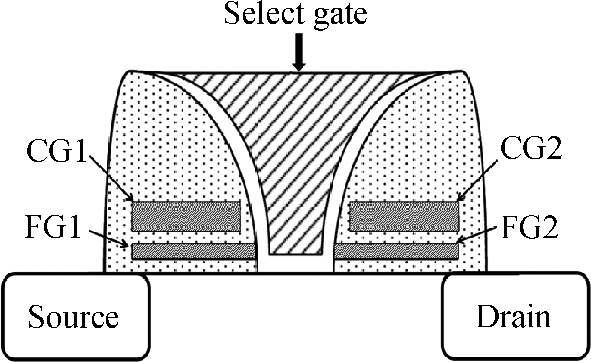
 DownLoad:
DownLoad:
